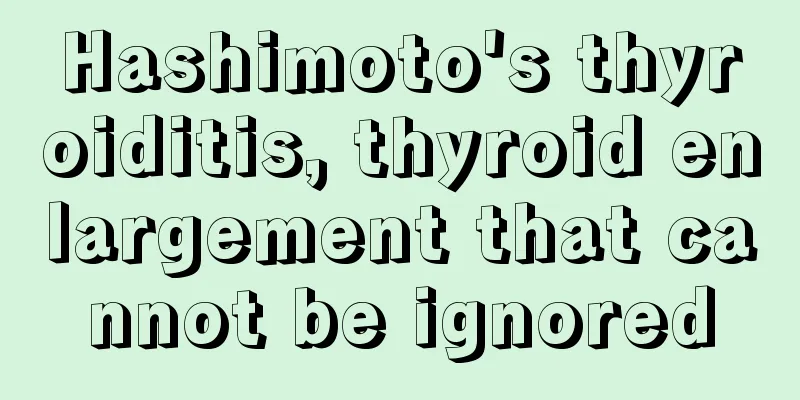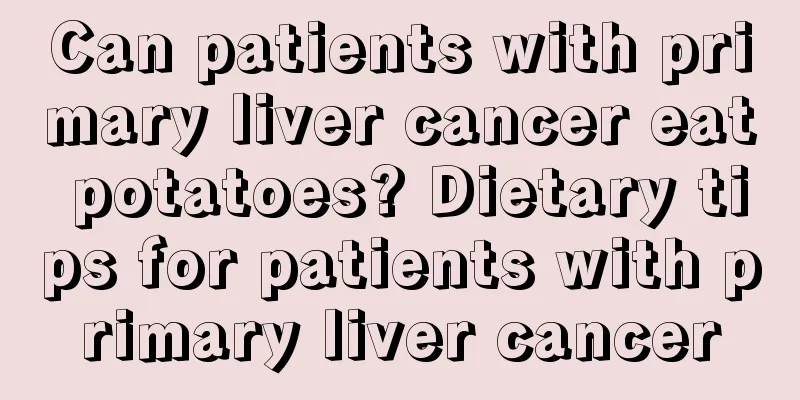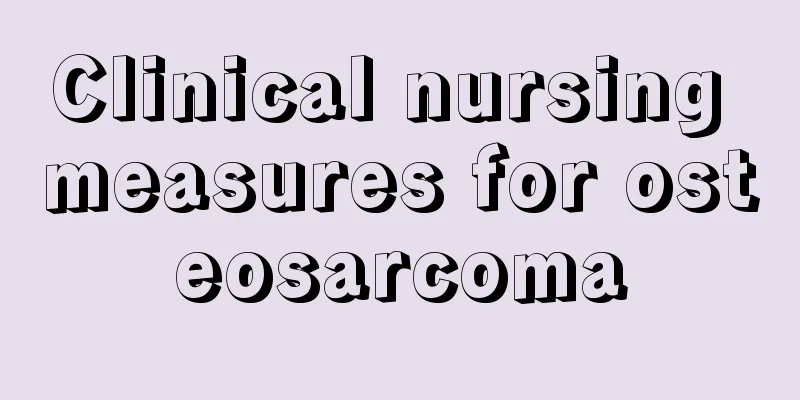Hashimoto's thyroiditis, thyroid enlargement that cannot be ignored

|
Hashimoto's thyroiditis is common among middle-aged women and is a very common thyroid disease. The disease progresses slowly and gradually becomes unnoticeable. Genetic factors, environmental factors, and immune factors are the main causes. 1. Symptoms of Hashimoto's thyroiditis 1. Clinically, Hashimoto's thyroiditis is mainly manifested by thyroid enlargement, especially in the early stages of the disease. The thyroid gland is diffusely enlarged, bilaterally symmetrical, with one side being slightly larger, with a smooth surface or nodules and a hard texture. It has a rubber-like hardness and is usually painless or mild. Occasionally there are compression symptoms, such as difficulty breathing, difficulty swallowing, neck pressure, hoarseness, etc. About 50% of patients have normal thyroid function at the beginning. 2. A small number of patients with Hashimoto's thyroiditis may develop symptoms of hyperthyroidism in the early stages of the disease or at a certain stage of the disease, namely Hashimoto's hyperthyroidism. At this time, symptoms may include intolerance to heat, excessive sweating, hand tremors, enlarged thyroid gland, palpitations, loose stools, fatigue, and bulging eyes. As the disease progresses, the thyroid gland is damaged and its reserve function gradually decreases. When the thyroid gland is damaged to a certain extent, hypothyroidism, namely Hashimoto's hypothyroidism, gradually appears. Symptoms include memory loss, loss of axillary hair, mental fatigue, dull expression, edema, etc. About 15% of patients have myxedema, and some patients have renal dysfunction. 2. Pathological causes 1. Genetic factors It has become a consensus that CLT is produced by the interaction of genetic factors and non-genetic factors. The production of thyroid autoantibodies is associated with autosomal dominant inheritance. In Europe and North America, HLA-B8, DR3, and DR5 are more common in CLT patients, while HLA-B35 is more common in Japanese. Xu Chun et al. used PCR-SSCP to detect the allele polymorphism of HLA-DQA1 and DQB1 loci in 30 Han Chinese CLT patients and found that the frequency of DQA1-0301 was significantly higher than that of normal controls, speculating that it may be a susceptibility gene for the disease in Chinese people. A research institute in the United States analyzed the genes of 56 Caucasian families with autoimmune thyroid disease and identified six genes related to autoimmune thyroid disease. Among them, the AITD-1 gene located on chromosome 6 is related to Graves' disease and CLT; CLT-1 on chromosome 13 and CLT-2 on chromosome 12 are related to the onset of CLT. Subsequently, they used whole genome screening to study a Chinese American family with a total of 27 members and found that D1IS4191 and D9S175 were related to CLT, thus concluding that different races have different genetic susceptibilities to CLT. The research of Tomer et al. showed that an important gene that determines the production of thyroid autoantibodies is located on chromosome 2q33, and the CTLA-4 gene, an essential co-stimulatory factor in the activation pathway, is most likely the thyroid antibody gene on chromosome 2q33. 2. Immunological factors The mechanism by which immunological factors cause thyroid damage is not fully understood. Currently, the following mechanisms are preferred: (1) Congenital immune surveillance defect: It causes abnormalities in the quantity and quality of organ-specific suppressor T lymphocytes, and T lymphocytes can directly attack thyroid follicular cells. (2) Autoimmune mechanism mediated by humoral immunity: HK cells can attack thyroid follicular cells in cooperation with anti-thyroid antibodies. When the antigen and antibody bind, the complex exists on the target surface of the target cell. The activated HK cells react with the Fc fragment of the antibody and kill the target cell. This antibody-dependent cytotoxic reaction involving HK cells is activated by the thyroglobulin-thyroglobulin antibody complex in CLT, has specific cytotoxicity and kills thyroid follicular cells. In addition, TPOAb itself exerts cytotoxic effects in thyroid tissue. (3) The lytic effect of complement-bound antithyroid antibodies on follicular cells. (4) Lymphocyte-mediated toxicity occurs first, and anti-thyroid antibodies trigger and initiate it. (5) CLT patients often have other autoimmune diseases, such as pernicious anemia, systemic lupus erythematosus, rheumatoid arthritis, type 1 diabetes, chronic active hepatitis, etc., which also proves the existence of autoimmune factors. 3. Environmental factors Infection and dietary iodide are two major environmental factors that contribute to the development of CLT. Wenzel et al. used western blotting to study anti-Yersinia bacterial antibodies in the serum of CLT patients and found that the frequency of this antibody was significantly higher than that in patients with non-autoimmune thyroid disease and the normal control group, indicating that Yersinia bacterial infection in the small intestine and colon is related to the occurrence of CLT. |
<<: How to prevent thyroid nodules, common preventive measures
>>: Adolescent idiopathic scoliosis needs to be treated as early as possible
Recommend
How to care for a lymphoma patient at home
Lymphoma is a serious disease. To save the life o...
What is the chance of bladder cancer recurring after surgery?
The chance of recurrence of bladder cancer after ...
Can loofah and beans be fried together?
Luffa and green beans are two common ingredients....
Symptoms of iridocyclitis
When iridocyclitis occurs, you need to pay attent...
What are the symptoms of liver cancer
The early development of liver cancer is characte...
What shoes are suitable for mountain climbing
Hiking is an outdoor sport that takes a long time...
Symptoms of albinism, three major categories to recognize
People with albinism, especially children, have e...
What foods can prevent liver cancer? Eat these foods to prevent liver cancer
Liver cancer is extremely harmful, I believe ever...
What are some tips for dry eyes
If your eyes often feel dry, you may be suffering...
Which hospital should I go to for treatment of breast cancer
Mental depression, frequent anger, bad mood, and ...
What tests should be done for prostate cancer? There are four tests for prostate cancer
The prostate is a very important organ for men. I...
Side effects of sweet potatoes
In the cold winter, you can often see roasted swe...
What should I do if the treatment of advanced lung cancer is not effective?
If the current treatment methods for patients wit...
Explain to you the common causes of colorectal cancer
The intestine is a part of the human body that is...
Will lung cancer be passed on to the next generation?
Scientific theory proves that lung cancer is not ...









